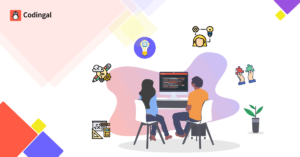Bad Bargain: Why We Still Ask Kids to Factor Polynomials and How We Fix It

OK, we cut a bad deal 20 years ago and it’s time to fix it.
Kids are still factoring polynomials and that’s just dumb. Requiring every student to pass a course on regurgitated symbol manipulation (Algebra 2) is torturous for many students and why some dropout. It’s an inequitable barrier to college and careers.
“The tragedy of high school math,” said venture investor and education advocate Ted Dintersmith (who has a Ph.D. in math modeling), “is that less than 20% of adults ever use algebra. No adult in America still does integrals and derivatives by hand – the calculus that blocks so many from career paths. It remains in the curriculum because it’s easy to test, not important to learn.”
Math educator Dan Meyer told the We’re Doing It All Wrong Podcast that the symbol manipulation of Algebra 2 can be “arcane gibberish” and “not useful knowledge” and “the work of numerical monks.”
Algebraic Backstory
The rise of the information age began ratcheting up labor market skill requirements. The mantra was A Nation At Risk. States responded in the early 1990s by developing new higher academic standards. More math, science and English credits were added to state graduation requirements.
By the late nineties, many of us advocated for ‘all kids college ready’ in an equity-focused policy push. Some of us knew it was a bad idea to try to push more kids through Algebra 2, but we not only did that, but we also added other “21st century” aspirations. We took the old definition of “college ready” and piled on.
Common Core was a chance to fix the problem with “fewer, higher, better standards.” But the mathematicians love the historical path to calculus and couldn’t let go of Algebra 2, the pinnacle of polynomial gymnastics. Probability and statistics and some finance were added. The standards were somewhat better but not fewer.
The problem is thorny, as Dintersmith points out, because Algebra 2 is embedded in some state graduation requirements and many college entrance exams, “requiring mastery of obscure algebraic procedures that the vast majority of adults never use.”
New New Math
With cameras and sensors everywhere, the Internet of Things exploded in this decade. Giant data sets and cheap cloud computing, fed the rise of artificial intelligence and, in the last two years, every field has become computational.
Now, rather than the plug and crank of symbol manipulation, we should be teaching computational thinking. As mathematician Conrad Wolfram said, we should be teaching math as if computers existed.
Rather than a separate symbol language, Wolfram argues, math should be taught as computational thinking and integrated across the curriculum. That starts with problem finding–spotting big tough problems worth working on. Next comes understanding the problems and valuables associated–that’s algebraic reasoning. But rather than focusing on computation (including factoring those nasty polynomials), students should be building data sets and using computers to do what they’re good at–calculations.
A little coding can be useful to set up big tough problems. A basic coding class or two can be helpful in this regard. The new approach, exhibited at Olin College and signaled by the launch of the Schwartzman school at MIT, is just-in-time coding, a computational resource available across the curriculum–learn the right coding to apply the right tools at the right time to solve the right problem.
South Fayette School District in Pittsburgh is a great example of incorporating computational thinking across the curriculum. Next door in the Montour School District, middle school students learn how and when to apply artificial intelligence tools.
To fix the problem, states that require Algebra 2 should swap it out for a course in coding and computational thinking. Colleges and college entrance exams should drop Algebra 2 requirements. They should start by asking young people about their contributions to solving big problems.
By the way, I loved math. I’m an engineer with a masters in finance. I’ve built a lot of real estate and invested a lot of money, but I haven’t factored a polynomial in 40 years. It’s time to stop torturing kids by making them factor polynomials. It’s time to stop using Algebra 2 as a screen that keeps low-income kids out of meaningful careers. It’s time to start using computers for what they’re good at—crunching big data sets. Let’s stop asking young people to manipulate symbols and start asking them to solve real problems.
For more, see:
- New School Formula: Harder Problems and Fewer Answers
- Organizing Your School as a List of Courses Doesn’t Work for Learners
- What Happens When We Do School Better?
Stay in-the-know with all things EdTech and innovations in learning by signing up to receive our weekly Smart Update.
This post was originally published on Forbes.








Tom Vander Ark
ED of an advocacy group suggested three possible pathways forward. One is with the textbook companies who believe they have to align with state standards and then want to sell as many copies as possible. One avenue here could be to create teaching resources that “align” with state standards but that actually emphasize the concerns you are raising. As complicated as this sounds, working with people who are interested in making a buck is probably an easier road than the politics of our state houses. The second and more palatable avenue is with higher education. I have frequently heard deans of admissions, presidents, and academic support deans talk about the fallacy of most of our math requirements. College is the driving force for outcomes of the system (we can actually quantify what college admissions want where as quantifying career readiness or citizenship is ambiguous and therefore relegated to a backseat). How can we get a network of colleges to stand up in opposition to the current math requirements? Third, work with College Board. What if the College Board offered a new “Reality Math SAT”? This could be an option for math that is tied to the real needs of living. And if we could get the network of colleges to accept this as the math reporting requirement, we could make progress. Finally, and we are doing this, we encourage schools to reframe the state standards—maintaining alignment but creating tools that can actually be used for teaching and learning. It simply moves past the requirements of the state standards.
Brandon
People can use calculators to do simple arithmetic too, so we should cut that out too. And honestly, who needs to know the details of the Constitution? I'd wager less than 10% of people. Cut it; we can just Google it if we ever need to know something about it. And we have audio books now too... reading is obsolete. History? Useless. With technology, why do most of us have to learn anything when we can just have that x% of nerds do all the work for us? You're missing the point of an education, I think. It's about more than just how to monetize from it. Be honest, your controversial argument is mostly just to drive site traffic, isn't it?
Replies
Tom Vander Ark
The point of education is to learn to use your mind well. The point and purpose of this site is to help more educators create environments and experiences where that happens. Using your mind well involves use of best available tools. It's time to teach math as if computers existed--and that allows us to engage young people to consider the data behind every big question we face.
Morten Raastad
Brandon, You’re missing the point of an education, I think. The point of education is to make us useful in the world we live in, not to be useful in a world that existed some hundred years ago. Learn the languages that are spoken today rather that those that are extinct, utilize printed books rather than handwritten books, use the compass rather than the position of stars, learn to drive a car rather than relying on the horse. And, of course, learn how to use math like it is used today rather than what was necessary hundred years ago.